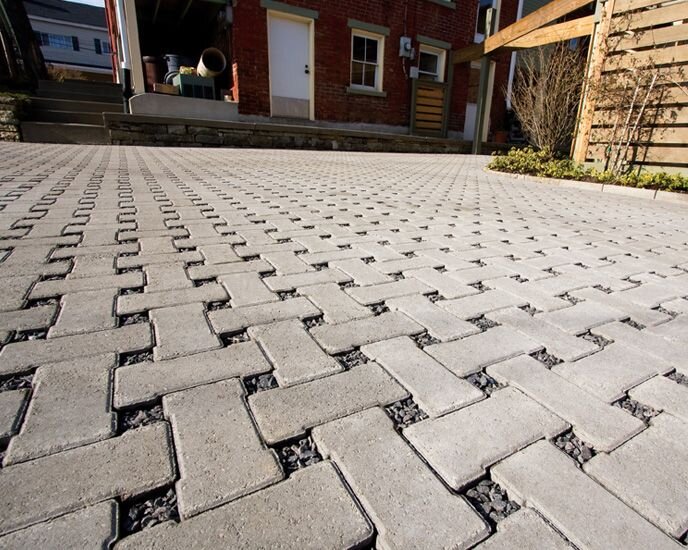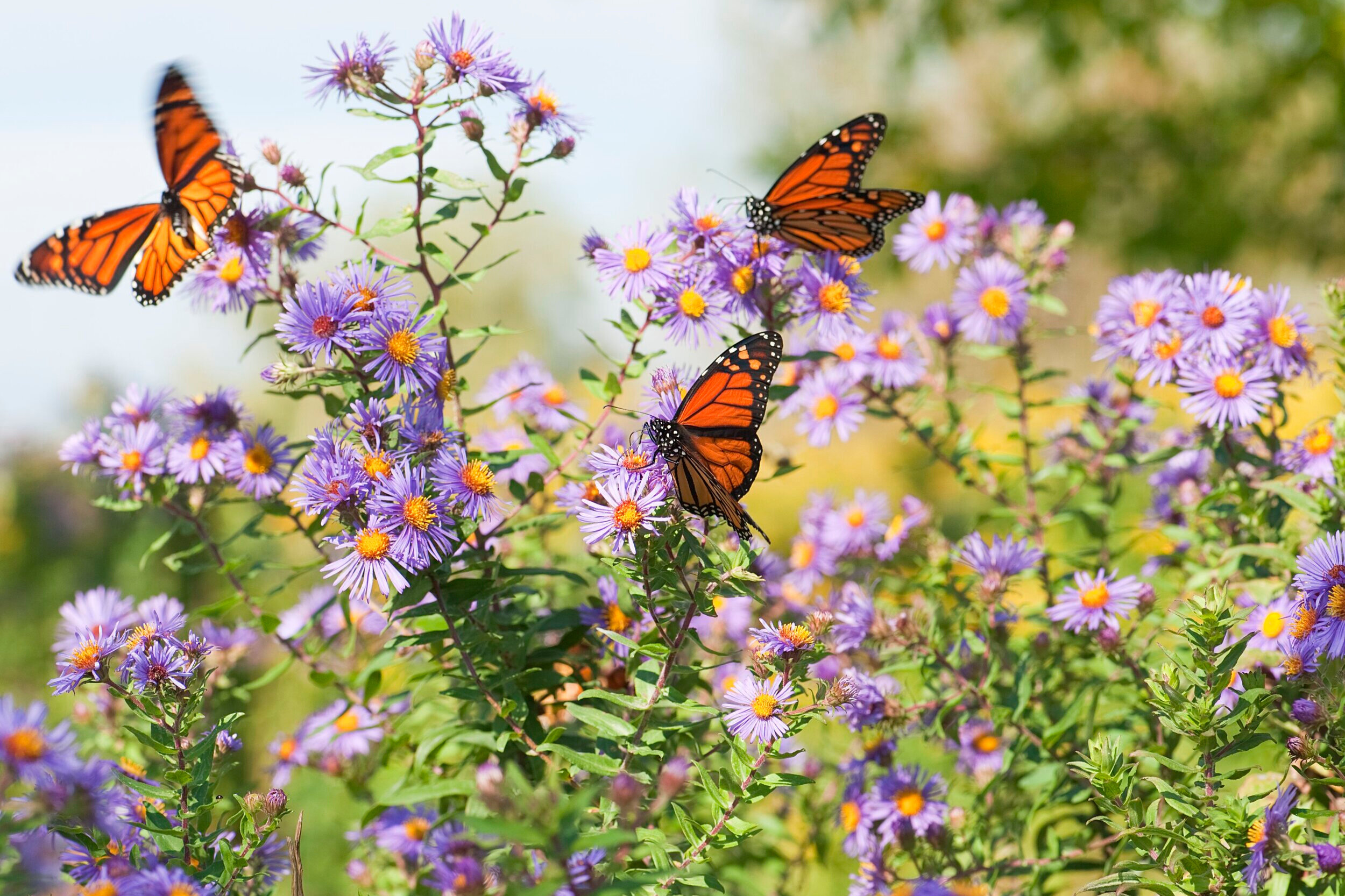Native Planting & Sustainable Design
Native Planting
Restoring native plant habitats is vital to preserving biodiversity. By creating a native plant garden, each patch of habitat becomes part of a collective effort to nurture and sustain the living landscape for birds and other animals.
Native plants are those that occur naturally in a region in which they evolved. They are the ecological basis upon which life depends, including birds and people. Without them and the insects that co-evolved with them, local birds cannot survive.
Landscaping choices have meaningful effects on the populations of birds and the insects they need to survive. The bottom line is this—homeowners, landscapers, and local policy makers can benefit birds and other wildlife by simply selecting native plants when making their landscaping decisions.
Benefits of native planting include:
Low maintenance:
Once established, native plants generally require little maintenance.
Beauty:
Many native plants offer beautiful showy flowers, produce abundant colorful fruits and seeds, and brilliant seasonal changes in colors from the pale, thin greens of early spring, to the vibrant yellows and reds of autumn.
Healthy Places for People:
Lawns and the ubiquitous bark-mulched landscapes are notorious for requiring profuse amounts of artificial fertilizers and synthetic chemical pesticides and herbicides. The traditional suburban lawn, on average, has 10x more chemical pesticides per acre than farmland. By choosing native plants for your landscaping, you are not only helping wildlife, but you are creating a healthier place for yourself, your family, and your community.
Helping the Climate:
Landscaping with native plants can combat climate change. In addition to the reduced noise and carbon pollution from lawn mower exhaust, many native plants, especially long-living trees like oaks and maples, are effective at storing the greenhouse gas carbon dioxide.
Conserving Water:
Because native plants are adapted to local environmental conditions, they require far less water, saving time, money, and perhaps the most valuable natural resource, water.
Wildlife
In addition to providing vital habitat for birds, many other species of wildlife benefit as well. The colorful array of butterflies and moths, including the iconic monarch, the swallowtails, tortoiseshells, and beautiful blues, are all dependent on very specific native plant species. Native plants provide nectar for pollinators including hummingbirds, native bees, butterflies, moths, and bats. They provide protective shelter for many mammals. The native nuts, seeds, and fruits produced by these plants offer essential foods for all forms of wildlife.
Water Gardens
Water gardens bring soothing sounds and distinctive plants to the garden. Your water garden design can host fish and colorful plants, and it will beckon all kinds of wildlife to your yard.
Butterfly Gardens
Create, improve, and maintain habitat for butterflies, skippers, and moths. Creating a habitat reduces the impacts of habitat fragmentation and degradation.
Rain Garden
Divert your gutter water into an attractive planting bed that works like a sponge and natural filter to clean the water and let it percolate slowly into the surrounding soil. The basin is planted with deep-rooted plants that drink up the excess water.




Permeable Pavers
Permeable pavers offer the same structural durability and support as concrete, but the environmentally conscious design allows water to gradually absorb into the ground leaving your driveway, patio, and parking spaces water-free. These pavers are installed with sand aggregate that slowly absorbs drainage as it soaks into the ground and waits to evaporate. Additionally, drainage devices can also be installed underneath permeable pavers to relocate water to more appropriate spaces. Not only are permeable paves practical but they offer a noticeably unique design to your living space.
Turfstone or Grow-Through Paving Stones
Turfstone stabilizes soil erosion by allowing rainwater to gradually filter back into soil. Its eco-friendly design reduces run-off while allowing greenery to grow through it, creating a unique natural look.
Permeable and Semi-Permeable Pavers
Permeable pavers eliminate stormwater runoff and improve water quality plus eliminate the need for traditional drainage and detention requirements, saving space and money.
Resin Bound
In recent years, NJ has been hit by flood events and proactive solutions to help prevent flash flooding and urban surface run-off are more readily available. Permeable resin bound paving allows for natural filtering of water as it seeps through the sub-base and back into the ground while providing a solid surface for walkways, patios, and driveways. The benefits beyond drainage using resin bound systems is that the surface gives the appearance of loose gravel but the aggregate is bonded in place. This eliminates maintenance problems associated with loose stone driveways and pathways.
Additional Benefits
Aesthetically pleasing with a decorative natural appearance
Durable, hard wearing and resilient
Fixed aggregates that will not move or wash away
Low maintenance
Anti-slip
Can be applied to asphalt, concrete, wood and steel surfaces
Residential Drainage and Water Recycling Systems
Stormwater management solutions help control runoff and eliminate standing water across a number of residential applications. Systems used in residential areas are able to direct stormwater throughout a property and away from a residence to help prevent damage. Other applications allow the opportunity to reuse water which would otherwise be wasted in the form of rainwater harvesting systems. These systems allow rainwater to be retained for use in landscape irrigation.
There are two main forms of rainwater harvesting systems; roof catchment and ground catchment. Systems that gather large amounts of water collected from a roof area usually involve water collection by routing it through a system of gutters and pipes into a cistern. Cisterns are tanks used for the storage of water which are located at or below ground level. A ground rainwater catchment system is simpler than a rooftop system and can be applied to a larger catchment area. A series of drain pipes and earthen dams are used to capture water for use in landscaping.




Meet Our Designers
Rusty Bell
Residential Landscape Design Manager & Landscape Designer
B.S. Horticulture
ICPI Certified
Secretary for State of New Jersey Native Plants
Chandler Miller
Senior Landscape Designer
BS Landscape Architecture, West Virginia University
Minor in Horticulture
Chandler, a New Jersey native, holds a Bachelor of Science in Landscape Architecture with a minor in Horticulture from West Virginia University. During her time at WVU, she had the opportunity to study abroad in several Eastern European countries, including Belgium, France, Great Britain, and the Netherlands, where she focused on local architecture and gardens. Chandler also served as President of the Student Society of Landscape Architects and participated annually in the National Collegiate Landscape Competition, representing the university at events across the United States.
After completing her studies, Chandler began her professional career in landscape architecture in Nashville, where she worked on both large- and small-scale projects nationwide. Her career later took her to Pittsburgh, PA, before ultimately bringing her back to her home state of New Jersey. Chandler initially interned with Down To Earth Landscaping while studying at WVU, and she is excited to have rejoined the team as Lead Landscape Designer.
Outside of her professional life, Chandler enjoys outdoor activities such as fishing, kayaking, and hiking in national parks, and cherishes time spent with her beloved pet pig, Miss Piglet.
Get in touch for estimates and general questions.
We’d love to hear from you.














